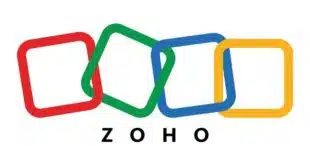Apple Inc. on Monday officially entered an increasingly crowded arena of players looking to carve out a share of the market for person-to-person payments. Apple Pay Cash, which the Cupertino, Calif.-based tech giant first announced six months ago, went live following the release of iOS 11.2, Apple’s latest operating-system update for iPhone 5s through its latest devices, iPhone 8 and X. The software also is available for iPad mini 2 or newer Apple tablets. Apple Pay, and Apple Pay Cash, however, is only compatible with iPhone SE or iPad mini 3 or newer devices. The launch follows a public beta Apple initiated four weeks ago.
With the commercial launch of Apple Pay Cash, Apple fulfills expectations that have swirled around its Apple Pay mobile-payment service at least since the service’s launch in 2014. But the P2P market has already attracted a number of heavyweight contenders, including PayPal Holdings Inc.’s popular Venmo service. For their part, the nation’s major financial institutions are also looking to scoop up their share of the P2P market with Zelle, which officially launched this summer and offers the advantage of receiving funds directly into existing bank accounts.

At the same time, P2P services are nearly universally free to consumers, leaving providers with the challenge of finding ways to recoup what can be a significant technology investment.
Still, Apple may find that its brand value, coupled with its reputation for ease of use, will attract users. Devotees of Venmo or Zelle don’t have to abandon those services to use Apple Pay Cash, notes Sarah Grotta, director of the debit and alternative products advisory service at Mercator Advisory Group Inc., a Maynard, Mass.-based payments consultancy. “How many P2P apps will consumers be comfortable using? The answer could be several, actually,” she tells Digital Transactions News.
Apple Pay Cash works with Messages, Apple’s messaging service, giving it a social-networking overlay similar to that of Venmo. Within Messages, users can send, receive, or request funds. The service also works with Apple Watch, and users can give instructions to Siri, Apple’s artificial-intelligence exemplar, to issue funds.
Senders tap an Apple Pay Cash Card for the money, and may also rely on other cards stored in their Apple Pay wallet if sufficient funds aren’t available on the Cash Card. The card is a prepaid product managed by Pasadena, Calif.-based Green Dot Corp. and its Green Dot Bank.
In this way, Apple can rely on its users to provide a steady flow of low-cost funds for retail purchases within Apple Pay, observers note. At the same time, Apple can rely on Green Dot Bank to manage the tangle of federal and state rules surrounding prepaid products. “It makes sense [Apple Pay Cash] is done through a prepaid card, from a regulatory standpoint,” notes Grotta.
One feature users likely won’t find on Apple Pay Cash, or other services, for that matter, is fees. While early entrants in electronic P2P, such as Fiserv Inc.’s Popmoney and Fidelity National Information Services Inc.’s People Pay, left the door open for client banks to levy a charge, market pressure from newer, non-bank services has rendered P2P virtually free to consumers.
“I think the industry has kind of given up on [fees],” says Grotta. “I don’t think we’ll see fees charged for P2P services again.”





